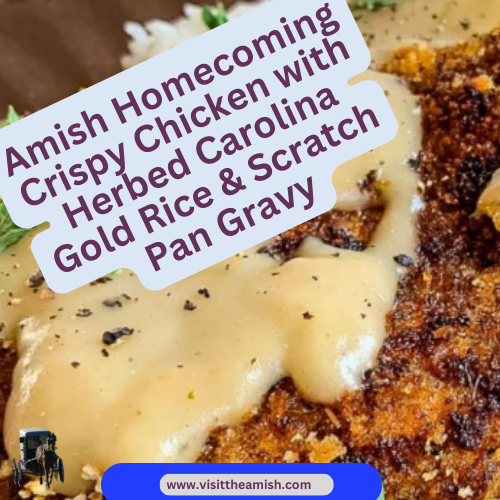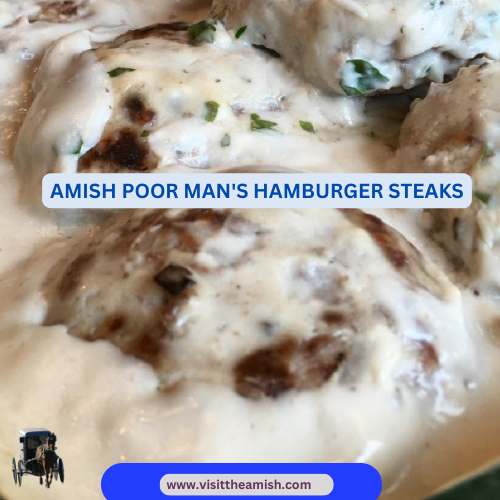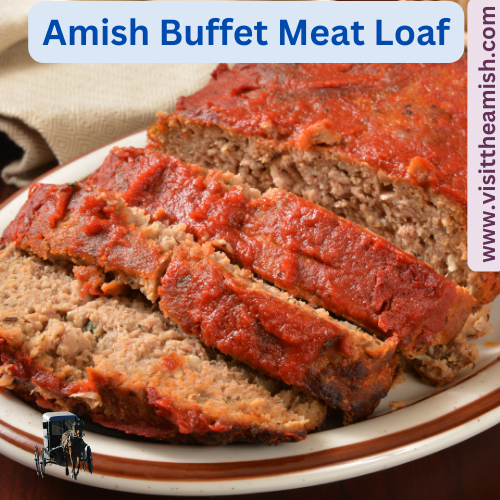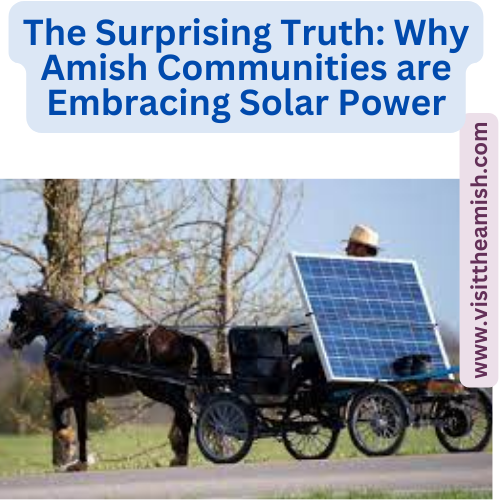Amish cuisine is known for its simplicity, hearty flavor, and use of fresh ingredients. One classic Amish dish that embodies these qualities is Amish Crispy Chicken and Carolina Gold Rice Herbed Rice. This dish is a delicious combination of crispy, juicy chicken and fragrant, herbed rice that is sure to satisfy your hunger and your taste buds.
The Amish Crispy Chicken is made by marinating chicken pieces in a mixture of buttermilk, salt, and pepper. The chicken is then coated in a seasoned flour mixture and fried until crispy and golden brown. The result is a crunchy, juicy chicken that is bursting with flavor.
The herbed rice is a perfect complement to the crispy chicken. This dish is made by cooking Carolina Gold rice with chicken broth, herbs like thyme and rosemary, and aromatics like onion and garlic. The result is a fragrant and flavorful rice dish that perfectly complements the savory chicken.
Additionally, the dish is versatile and can be adjusted to suit your tastes. You can use different herbs in the rice or add spices to the flour mixture to give the chicken a different flavor profile.
Overall, Amish Crispy Chicken and Herbed Rice is a delicious and satisfying meal that is sure to please. Whether you are looking for a comforting dinner on a cold night or just want to try something new, this dish is definitely worth making. So why not give it a try and experience the delicious flavors of Amish cuisine for yourself?
INGREDIENTS
Ingredients for the Crispy Chicken
- 6 boneless, skinless chicken breasts
- 2 teaspoons kosher salt, divided
- 1 1/2 teaspoons black pepper, divided
- 2 large eggs
- 1/2 cup whole milk or buttermilk
- 2 cups panko
- 1 1/2 teaspoons Italian seasoning or Herbes de Provence
- 1 teaspoon smoked paprika
- 3 tablespoons salted sweet cream butter
- 3 tablespoons quality olive oil
Ingredients for the Herbed Carolina Gold Rice
- 4 cups hot, cooked Carolina Gold rice or other short-grain white rice
- 2 tablespoons salted sweet cream butter
- 2 tablespoons chopped fresh flat-leaf parsley
- 2 tablespoons chopped fresh chives
- 2 tablespoons chopped fresh thyme leaves
- 1 teaspoon Kosher salt
- 1/2 teaspoon freshly cracked black pepper
Ingredients for The Scratch Pan Gravy
- 1/4 cup very soft, but not quite melted salted butter
- 1/4 cup all-purpose flour
- 2 cups homemade chicken stock or full-fat chicken broth
- 1/2 teaspoon kosher salt
- 1/4 teaspoon freshly cracked black pepper
INSTRUCTIONS
- Prepare the Chicken
- Preheat oven to 350°F.
- Place chicken breasts between 2 sheets of plastic wrap, and flatten to about 3/4-inch thickness, using a rolling pin or flat side of a meat mallet.
- Sprinkle chicken with 1 teaspoon each of the salt and pepper.
- Whisk together eggs and milk in a shallow dish.
- Stir together panko, Italian seasoning or Herbes de Provence, smoked paprika, and remaining 1 teaspoon salt and 1/2 teaspoon pepper in another shallow dish.
- Dip chicken, 1 piece at a time, in egg mixture, shaking off excess; dredge in panko mixture, coating well and pressing to adhere.
- Melt 1 1/2 tablespoons of the butter with 1 1/2 tablespoons of the olive oil in a large cast iron skillet over medium.
- Cook 3 chicken breasts in skillet until golden, 3 to 5 minutes per side. Remove chicken from pan, and place on a rimmed baking sheet.
- Repeat with remaining butter, oil, and chicken. Bake in preheated oven until chicken is cooked thoroughly, about 10 minutes.
- Begin the Pan Gravy
- Using the same cast iron skillet as the chicken breasts, whisk together 1/4 cup melted salted butter and 1/4 cup all-purpose flour in a large skillet. Cook over medium, whisking constantly, until bubbly, about 2 minutes. Gradually whisk in 2 cups homemade chicken stock, 1/2 teaspoon kosher salt, and 1/4 teaspoon black pepper.
- Cook, whisking often, just until mixture comes to a boil and is smooth and thick, 2 to 5 minutes. (If mixture is too thick, stir in up to 1/2 cup more broth, 1/4 cup at a time, until desired consistency is reached.)
For the Herbed Rice
- Combine all ingredients in a bowl, and stir until butter is melted. Serve with chicken and scratch pan gravy.
- Mound 2 heaping (serving) spoonfuls of the herbed rice in the center of each plate.
- Using tongs, transfer 1 cutlet to each plate, standing the cutlet up on the rice at an angle.
- Top with a small amount of the gravy.
- Garnish with additional chopped herbs or handfuls of fresh thyme.
- Be sure to have the remaining gravy on the table for passing.









